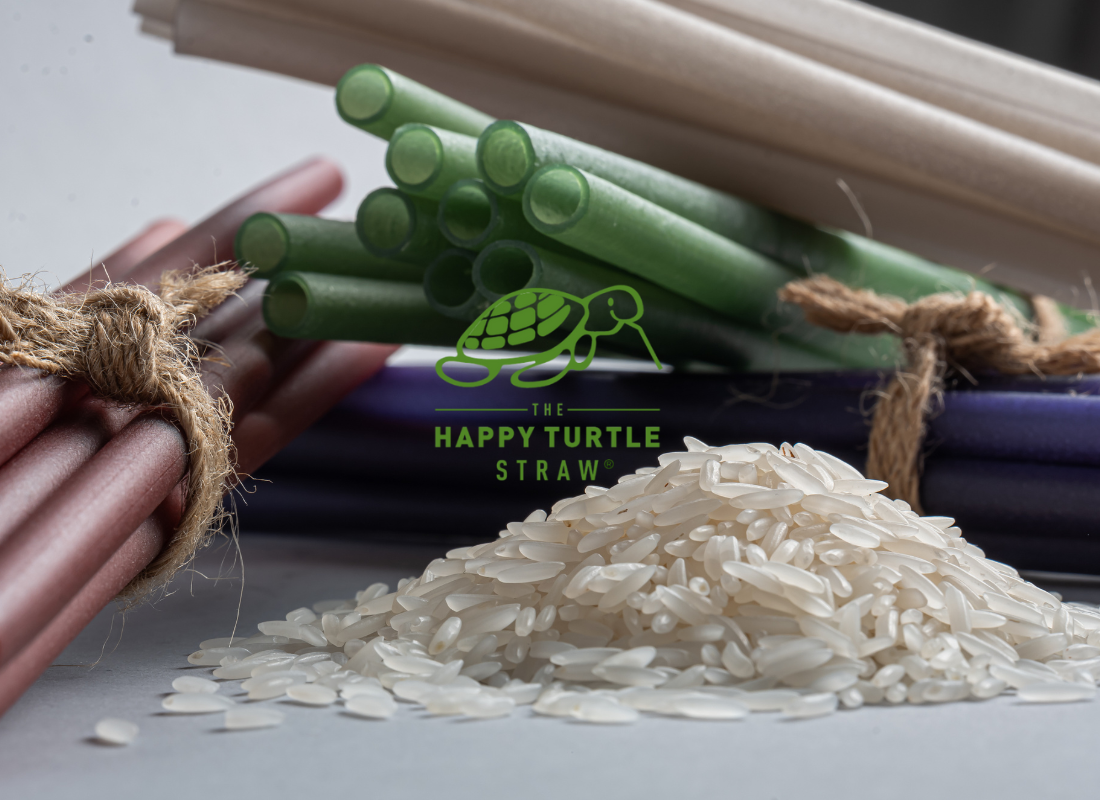
In recent years, there has been a growing global movement towards finding sustainable alternatives to single-use plastics. Among these alternatives, rice straws have gained prominence as an eco-friendly option. From their humble beginnings as agricultural byproducts to their role in combating plastic pollution, the science behind rice straws unveils a fascinating journey of innovation and sustainability.
Introduction to Rice Straws:

Rice straws are typically made from two primary ingredients: rice grains and tapioca. Tapioca is a natural, biodegradable substance, which acts as a binding agent. These ingredients are mixed to form a dough-like consistency, which is then extruded into the shape of a straw.
The Making of Rice Straws:
 Manufacturing Process:
Manufacturing Process:
- Rice Processing: The rice grains undergo a milling process to remove the outer husk, bran layer, and germ, leaving behind the starchy endosperm.
- Mixture Preparation: The milled rice flour is combined with the binding agent in precise proportions. This mixture is thoroughly mixed until it reaches a uniform consistency. Our rice straws are made from natural ingredients such as rice flour and tapioca starch.
- Extrusion: The mixed dough is fed into an extruder, a machine that applies heat and pressure to shape the dough into long, cylindrical tubes resembling traditional plastic straws. The extrusion process ensures uniformity in size and shape.

- Cutting: Once extruded, the long tubes are cut into individual straw lengths.

- Drying: These straws are then dried to remove excess moisture, ensuring stability and durability.

- Packaging: After drying, the rice straws are packaged and prepared for distribution.

- Quality Control: Throughout the manufacturing process, stringent quality control measures are implemented. This includes testing the straws for durability, flexibility, and overall performance. Any straws that do not meet the specified standards are discarded, ensuring that only the highest quality products reach the market.
Understanding Biodegradability:
 One of the most significant advantages of rice straws is their biodegradability. Unlike plastic straws, which can persist in the environment for hundreds of years, rice straws break down naturally over time, our straws biodegrade in 90 days. This biodegradation process is driven by microorganisms in the environment, which feed on the organic material in the straws and convert it into simpler compounds.
One of the most significant advantages of rice straws is their biodegradability. Unlike plastic straws, which can persist in the environment for hundreds of years, rice straws break down naturally over time, our straws biodegrade in 90 days. This biodegradation process is driven by microorganisms in the environment, which feed on the organic material in the straws and convert it into simpler compounds.
The Biodegradation Process:
Rice straws are considered biodegradable because they are made from natural materials that break down over time when exposed to environmental conditions. The rice grains themselves are organic and decompose readily in soil and water. Additionally, the binding agents used in rice straw production are typically derived from plants and are biodegradable as well.
When disposed of properly, either through composting or in a suitable waste management system, rice straws will break down into harmless components without leaving behind harmful residues or contributing to plastic pollution.
Environmental Impact:
The biodegradability of rice straws has significant environmental implications. By breaking down into harmless compounds, rice straws help to mitigate the accumulation of plastic waste in landfills and ecosystems. This reduces the threat to wildlife and marine life, which can ingest or become entangled in plastic debris.
Environmental Benefits:
- Reduction of Plastic Pollution: By replacing plastic straws with biodegradable alternatives like rice straws, the amount of plastic waste entering landfills and oceans can be significantly reduced.
- Renewable Resource: Rice grains, the primary ingredient in rice straws, are a renewable resource that can be sustainably harvested without causing long-term environmental damage.
- Support for Farmers: Utilizing rice grains for straw production provides an additional market for farmers, potentially increasing their income and incentivizing sustainable agricultural practices.
Sustainable Sourcing:
In addition to their biodegradability, rice straws are also environmentally friendly in terms of sourcing. Rice plants are a renewable resource that can be sustainably harvested year after year.
Conclusion:
 The science behind rice straws reveals a story of innovation, sustainability, and environmental stewardship. From their origins as agricultural byproducts to their role in combating plastic pollution, rice straws exemplify the potential of eco-friendly alternatives to single-use plastics. By embracing rice straws, we take a step towards a cleaner, greener future for generations to come.
The science behind rice straws reveals a story of innovation, sustainability, and environmental stewardship. From their origins as agricultural byproducts to their role in combating plastic pollution, rice straws exemplify the potential of eco-friendly alternatives to single-use plastics. By embracing rice straws, we take a step towards a cleaner, greener future for generations to come.
Sources:
https://www.bbcgoodfood.com/howto/guide/what-biodegradable-really-means
https://www.mdpi.com/2073-4360/14/7/1359
https://www.sciencedirect.com/science/article/pii/S2666498423000194




